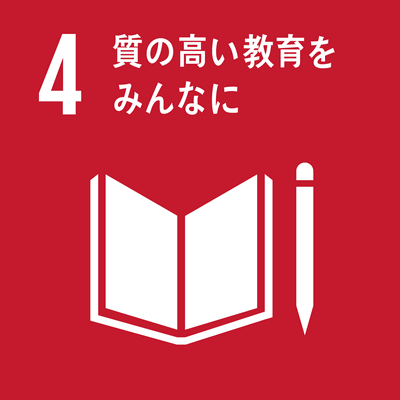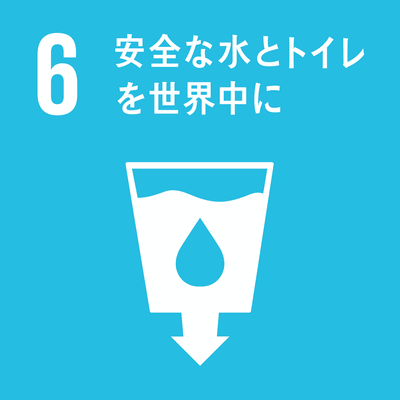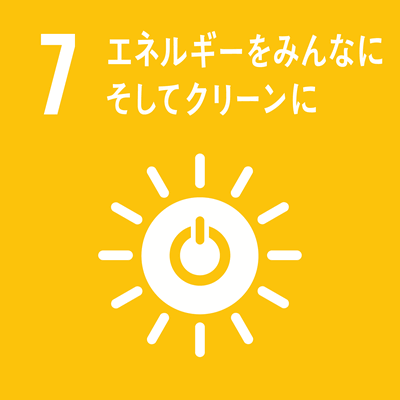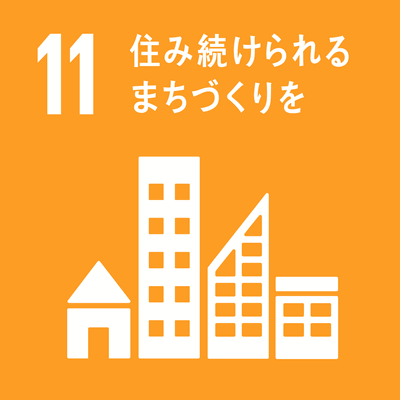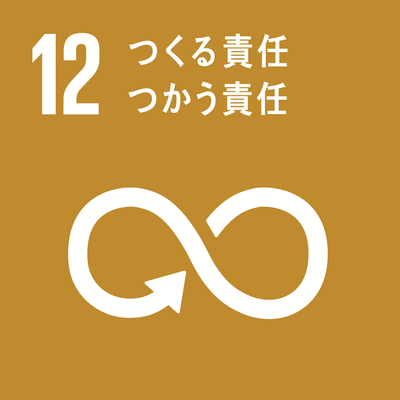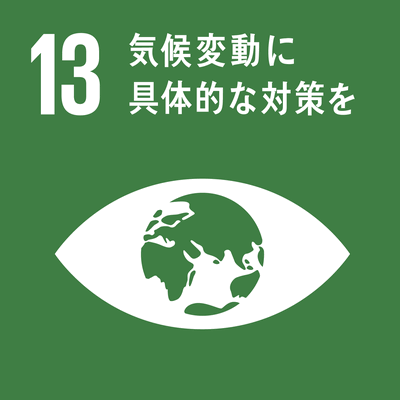シラバス表示
シラバスの詳細な内容を表示します。
→ 閉じる(シラバスの一覧にもどる)
科目の基本情報
| 開講年度 | 2022 年度 | |
|---|---|---|
| 開講区分 | 工学研究科(博士前期課程)共通科目 | |
| 領域 |
主領域 : E; 副領域 : F 研究科共通科目 |
|
| 受講対象学生 |
大学院(修士課程・博士前期課程・専門職学位課程) : 1年次, 2年次 |
|
| 選択・必修 | 選択 |
|
| 授業科目名 | 先端技術特論 I | |
| せんたんぎじゅつとくろん I | ||
| Frontier Technology I | ||
| 単位数 | 1 単位 | |
| ナンバリングコード | engr-comn-ENGR5101
|
|
| 開放科目 | 非開放科目 | |
| 開講学期 |
前期前半 開講日は5月11日(水)からです。以降、毎週開講で6/29まで。 |
|
| 開講時間 |
水曜日 3, 4時限 |
|
| 授業形態 |
ハイブリッド授業 * 状況により変更される可能性があるので定期的に確認して下さい
「オンライン授業」・・・オンライン会議ツール等を利用して実施する同時双方向型の授業 |
|
| 開講場所 | ||
| 担当教員 | 三宅秀人(工学研究科電気電子工学専攻),髙橋 裕(工学研究科機械工学専攻),小竹茂夫(工学研究科機械工学専攻),八尾 浩史(工学研究科分子素材工学専攻),鳥飼 直也(工学研究科分子素材工学専攻) | |
| MIYAKE Hideto, TAKAHASHI Yutaka, KOTAKE Shigeo, YAO Hiroshi, TORIKAI Naoya | ||
| SDGsの目標 |
|
|
| 連絡事項 | [日程及び講師] 第1回 5月 11日 三宅秀人 教授 第2回 5月 18日 三宅秀人 教授 第3回 5月 25日 髙橋 裕 教授 第4回 6月 1日 小竹茂夫 教授 第5回 6月 8日 八尾浩史 教授 第6回 6月 15日 八尾浩史 教授 第7回 6月 22日 鳥飼直也 教授 第8回 6月 29日 鳥飼直也 教授 [場所] 感染状況等により別途指示します。(Moodle登録を行い確認すること) * 状況により変更される可能性があるので定期的に確認して下さい |
|
学修の目的と方法
| 授業の概要 | 各専攻分野での先端技術について,最新の研究・開発状況を概観すると共に,それらの基礎学問との関連を講義する。 |
|---|---|
| 学修の目的 | 講義内容に関連する分野の先端技術について,専門知識を深める。 |
| 学修の到達目標 | 各自が所属する専攻にとらわれることなく,基礎学問が先端技術とどのように関係しているかを習得する。 |
| ディプロマ・ポリシー |
|
| 成績評価方法と基準 | 出席状況と課題レポートで評価する。 |
| 授業の方法 | 講義 |
| 授業の特徴 | |
| 授業改善の工夫 | |
| 教科書 | |
| 参考書 | |
| オフィスアワー | |
| 受講要件 | |
| 予め履修が望ましい科目 | |
| 発展科目 | |
| その他 |
英語対応授業である。 |
授業計画
| MoodleのコースURL |
https://moodle.mie-u.ac.jp/moodle35/course/view.php?id=4659 |
|---|
| キーワード | 電子顕微鏡,量子テレポーテーション,量子アルゴリズム,オプトエレクトロニクス,LED, 半導体, レーザーディスプレイ,ナノ構造,金属クラスター,光機能,ソフト複合材料,界面物性 グリーンケミストリー,フロー合成 |
|---|---|
| Key Word(s) | Electron Microscopy; Quantum Teleportation; Quantum Algorithm; Optoelectronics; Semiconductor; LED; Laser Display; Nano Structure; Meatal Cluster; Function; oft Composite Material, Interfacial Properties |
| 学修内容 | この特論では,5名の教員により8回の講義が行われる。 1.「光半導体デバイスとイノベーション」(2回分)(三宅秀人) 半導体は「産業の米」と言われるように、今日のエレクトロニクスを中心とする社会の中で、欠くことのできない材料であり、デバイスである。特に、2000年以降、LEDは単なる表示デバイスではなく、照明やディスプレイのバックライト、携帯電話など社会を変えるイノベーションに繋がっている。本講義では、LEDなどの光デバイスの原理から、最先端となり深紫外LEDまでを解説する。 "Optical Semiconductor Devices and Innovation" (2 seminars) (Hideto Miyake) Semiconductors, as they are called "industrial rice," are indispensable materials and devices in today's electronics society. In particular, since 2000, LEDs are not just display devices, but have led to socially changing innovations such as lighting, display backlights, and mobile phones. In this lecture, we will explain from the principle of optical devices such as LEDs to cutting-edge and deep ultraviolet LEDs. 2.「電子顕微鏡技術」(1回分)(高橋裕) 電子顕微鏡が初めて試作されてから1世紀が経たずして,生物系および非生物系の分野において汎用的に使用される技術にまで発展を遂げた。誰でも使える装置にはなったが,「何が見えているのか,何を見ているのか?」という原理をある程度理解していないと,みすみす取れる情報を見逃すばかりでなく,まったく間違った像解釈を下すことさえあり得ることは今も昔も変わらない。本講義では,初等的な結像原理について概説し,最近の集積化されたシステムでの観察例を紹介する。 "Electron microscopy technology" (1 seminar) (Yutaka Takahashi) Less than a century after the first prototype of the electron microscope, it has evolved into a technology that can be used universally in biological and materials fields, and has become a friendly device that anyone can use. However, without a certain understanding of the principles of imaging, it will not only be possible to miss an important information, but also to make a completely wrong interpretation of the image. In this lecture, elementary imaging principles and introduce observation examples using recent integrated systems will be reviewed. 3. 「物質と情報を結ぶ量子論」(1回分)(小竹茂夫) 工学研究科が材料と情報に分かれているように,従来,これらは全く異なる分野とされてきました。しかし量子論によれば,原子・電子等の各量子粒子自体は,互いに合い等しく,それらに乗った情報(波動関数)のみが違いを決めます。本講義では,題名にある「物質と情報を結ぶ量子論」を合言葉に,量子エンタングルメント,量子テレポテーション,量子複製不可能定理,量子アルゴリズム,量子コンピュター等の先端技術を始め,これらの技術と従来の機械工学との関わりについてお話します。 "Quantum theory connects material and information" (1 seminar) (Shigeo Kotake) Traditionally, just as the graduate school of engineering in Mie University is divided into materials and system course, material and information have been completely different fields. However, according to quantum theory, all each quantum particles, such as electrons and atoms, themselves are equal, and only the information (wave function) on them determines the difference. In this lecture, using the title of "Quantum theory connects material and information" as the slogan, I will talk about advanced technologies such as quantum entanglement, quantum teleportation, quantum no-cloning theorem, quantum algorithm, and recent high achievement on realization of quantum computers. Also, I will show some relationship between these technologies and conventional mechanical engineering. 4. 「光で見る金属ナノ構造」(2回分)(八尾 浩史) 金や銀などの貴金属はバルク状態では可視光を反射し、いわゆる金属光沢を示す。これら金属を光の波長よりも小さな、数百–数nmの大きさの構造体にすると、そのサイズに応じて極めて特徴的な色を呈する。この色の起源は何であろうか。更に粒子のサイズを小さくして「クラスター」領域に至れば、もはや金属ではない。この様に、金や銀はサイズを制御するだけでバルクにはない高機能化が付与される。本講義では、主に様々な金属ナノ構造体やクラスターが示す光機能性について講義する。 “Metal nanostructures probed by light” (2 seminars) (Hiroshi Yao) Noble metals such as gold and silver generally have a metallic luster, and many of their properties can be attributed to the way free electrons are arranged in the material. However, such metals in the state of nanostructures smaller than the wavelength of visible light show unique beautiful color as a function of their size. What is the origin? Additionally, when the diameter of the nanoparticles becomes smaller than a few nanometers, which is frequently called clusters, they are no longer metals. In this lecture, we will focus on photo-functionality of nanoparticles or clusters of metal and related compounds. 5. 「ソフト複合材料の界面制御」(2回分)(鳥飼 直也) 近年の材料の性能に求められる高い要請を満たすために,高分子コンポジットやエマルションなど複数の異種の材料を組み合わせた複合材料が身の回りでさまざまな用途に利用されている。これら複合材料中には,異種の材料同士が接する界面が必ず存在し,極薄の空間ながら界面によって材料特性を制御することが可能であることから,材料設計における界面の重要性が増している。本講義では,界面によるソフト複合材料の設計について紹介する。 "Design of Soft Composite Material by Interface" (2 seminars) (Naoya Torikai) The composite materials fabricated from different materials such as polymer composite, emulsion, etc. have been utilized in daily life to fulfil recent severe requirement for material performance. These composite materials inevitably possess an interface, at which different materials come in contact with each other. The importance of "interface" increases for material design due to a possibility to control material properties by the interface with an extremely thin space. In this seminar, the design of soft composite materials by using interface will be lectured. |
| 事前・事後学修の内容 | 講義後に内容を復習し、関連事項の調査などを含めてレポート提出を求めます。 |
| 事前学修の時間:110分/回 事後学修の時間:110分/回 |
